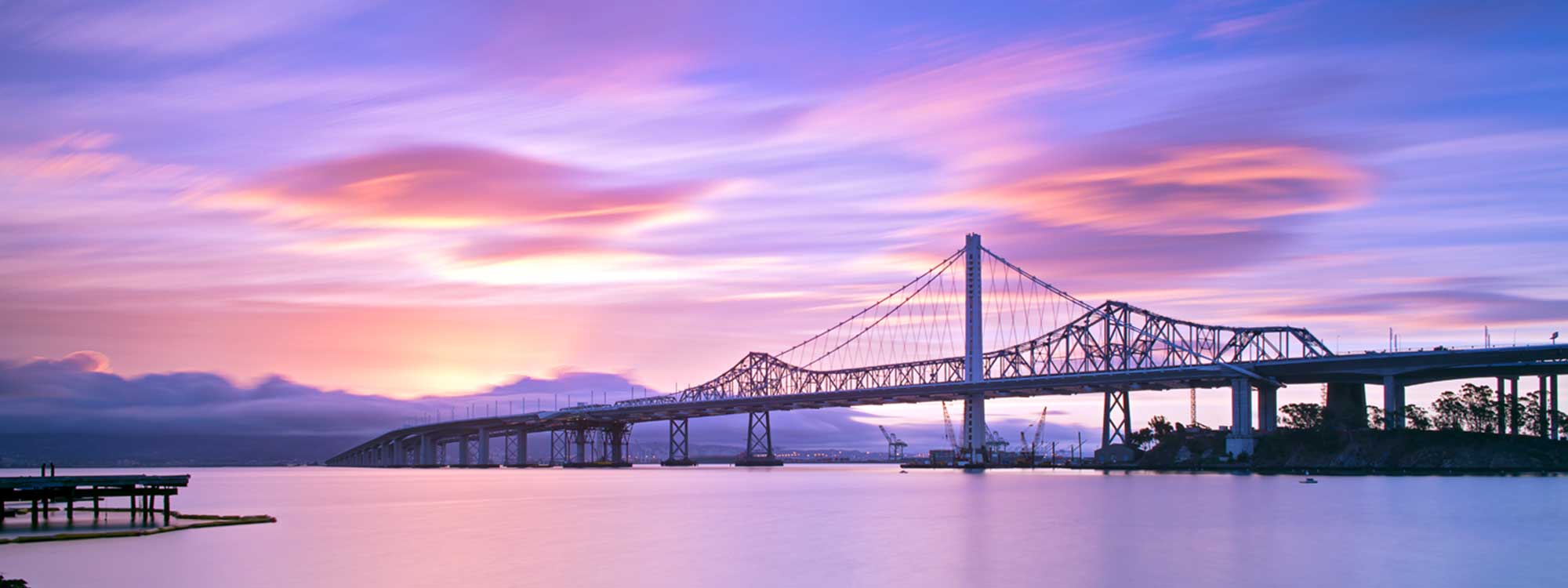Without the lure of pirates and maps with X’s, you’ve probably never visited Treasure Island – few have – but you should. This little island offers easy walking and stunning views of San Francisco, the bay and the Bay Bridge.
Artificial turf
One of the world’s largest artificial islands, Treasure Island was created in 1936 and 1937 from mud and silt dredged from the bay. In 1939, it became the site of California’s last world’s fair, the Golden Gate International Exposition. For five years, it was home base for the Pan American Airways China Clipper fleet of “flying boats,” the first regular transpacific flights. What is now the Administration Building was then the airport terminal – you can still see the air traffic controllers’ kiosk on top and three giant hangars behind. From World War II until the mid-1990s, Treasure Island was a U.S. Navy base.
Walking here has elements of urban archaeology. Relics of bygone days are everywhere: dilapidated warehouses, storage tanks and housing (now refurbished and available for lease). You can see the Bay Bridge under construction.
But Treasure Island offers much more than human artifacts. With light traffic, mature trees and lots of green open space, the setting is parklike. Gulls call overhead as you watch a sea lion playing in the waves.
Getting around
There are no markers to indicate walking routes, but it’s almost impossible to get lost here. The island is flat and vaguely rectangular, with numbered streets (First to 13th) running roughly east and west, and lettered avenues (B to N) running roughly north and south. Two major exceptions are California Avenue (in place of Second Street) and Avenue of the Palms (in place of Avenue A). The riskiest part of this trip is the weather – it can be delightful or bone-chilling, so wear layers.
Highlights stroll
This short walk (1.5 miles) starts at the semicircular Administration Building just to your right as you enter the island. Walk north up the shoreline path along Avenue of the Palms. Turn right at California Avenue. Cross the width of the island on California. You will see three airplane hangars on your right, and gardens, a conference center and a rugby field on your left. At the end of California, pause to watch construction crews maneuver steel girders with mammoth cranes, and note their progress on the bridge beyond.
From here, turn right along the water’s edge (Avenue N). Follow the shoreline as you double back by the hangars, boat harbor, yacht club and Treasure Island Bar and Grill (open 10 a.m. to 9 p.m. daily; (415) 627-9060). When you reach Avenue of the Palms, turn left up the footpath next to the causeway along the boat harbor. Turn into Clipper Cove Picnic Area. Take the steps down to the beach, if you’d like, or just enjoy a snack at the picnic tables here. Return the way you came.
Perimeter walk
For a longer adventure (about 3.5 miles), you can circle the entire island, and most of your walk will be right by the shore. From the Administration Building, turn right on Avenue of the Palms. When the road turns inland, continue on the footpath that hugs the shore. After about a quarter mile, the path is blocked by a chain-link fence. Turn right on the gravel path, then turn left on the first street you come to (Gateview Avenue). Just past Mason Court, there’s a footpath to your left that takes you back to the shoreline and the perimeter path. The views over the water are glorious here.
Turn right on the perimeter path, and continue along to just past the breakwater, where there are more fences. Cut across the open field behind the houses. You will emerge on Avenue M. Continue south on Avenue M and turn left on 13th Street, toward the shoreline. Turn right on Avenue N and follow along the shore past the bridge construction site and the boat-filled Clipper Cove until you reach the Administration Building.
Getting there
Take Muni’s No. 108 bus from the temporary Transbay Terminal at Howard and Main streets. By car, cross the Bay Bridge and take the Treasure Island exit.
Photo: David Yu via Flickr




